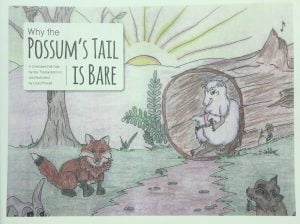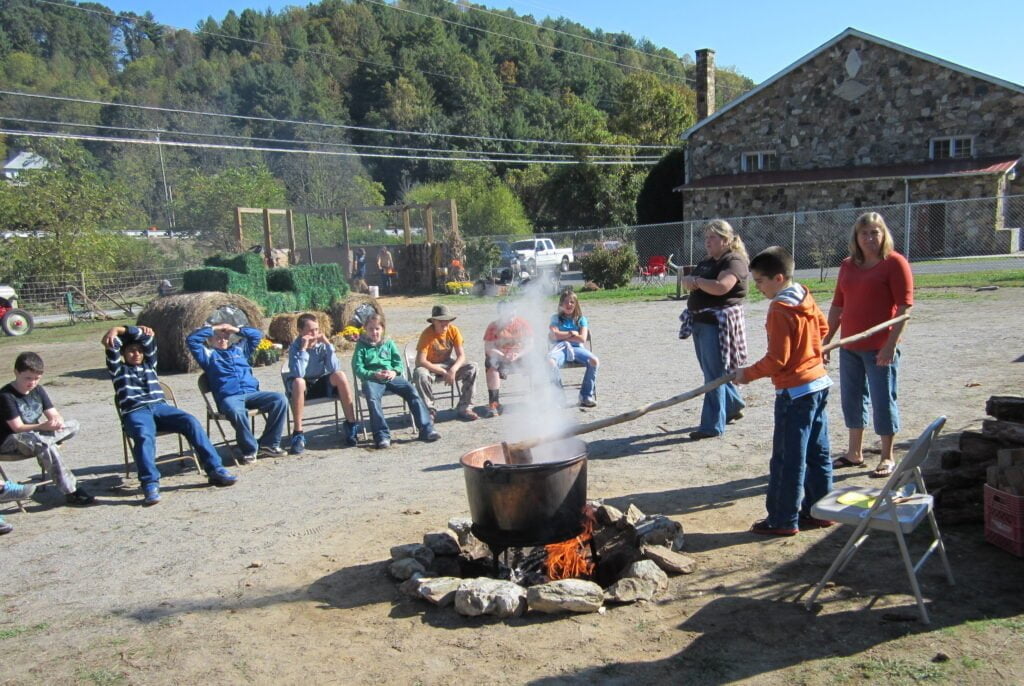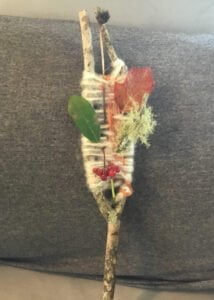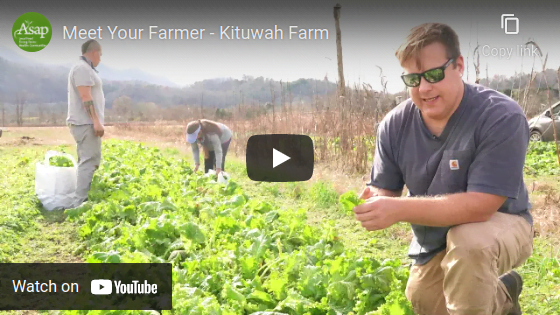This week’s theme is Appalachian Traditions. Our “Growing Minds Day by Day” educational resource lists are designed for families and educators.
Books:

A is for Appalachia! – The Alphabet Book of Appalachian Heritage
By Linda Pack
This ABC book celebrates the people, cultural traditions, and geography of the Appalachian region. Watch a read aloud on YouTube.

When I was Young in the Mountains
By Cynthia Rylant
In this Caldecott Honor Book, author Cynthia Rylant chronicles the simple joys of living with her grandparents in the Appalachian Mountains: fresh cornbread, the swimming hole, bathing in the tin tub, snakes, and the community church. Surrounding all of these memories is the loving relationship with her grandparents. Watch a read aloud on YouTube.

Why the Possum’s Tail is Bare: A Cherokee Legend
According to Cherokee legend, the possum used to have a beautiful, bushy tail. This folktale describes how the possum’s tail became bare and scaly, as well as why possum’s play dead. Read three different versions of this Cherokee legend here. An illustrated version of this folktale (which includes Cherokee syllabary vocabulary words) can be checked out from our Growing Minds lending library.
Find more books
Visit the Growing Minds’ farm to school literature database to discover more of our favorite children’s books. Educators in the Asheville area can check out the books featured above from our lending library.
Local Food Recipe:

Apple Butter is a signature food of Appalachia. It has a richer flavor than applesauce, due to the fact that it’s cooked much longer, which concentrates the flavors. Traditionally, family and friends in mountain communities came together each fall following the apple harvest to cook apple butter. Each family had their own preference for the best apple varieties to use for apple butter. At these day-long events, big batches of apples were cooked down over the course of many hours in large kettles and stirred with wooden paddles. Once ready, apple butter was “put up” (or can) in jars to keep through the winter. This traditional method of making apple butter continues today in many Appalachian communities.
Apple butter can also be made in smaller batches indoors, either in a slow cooker as with the recipe below, or on the stovetop. Although apple butter is traditionally made in the fall, locally grown apples are available from farmers markets in our region throughout the winter months.
To teach children about this Appalachian tradition, read the book Apple Butter Time by Candice Ransom. Find a historical recipe for apple butter on AppalachianHistory.net. Looking for more Southern Appalachian recipes to make with your students or family? Check out the cookbook Cider Beans, Wild Greens, and Dandelion Jelly by Joan Aller.

Slow Cooker Apple Butter
This recipe comes from Charlie Jackson, previous ASAP Co-Director.
Ingredients:
- Apples, mixed variety, washed (the amount can vary, but you want to fill a six-quart slow cooker)
- 2 cups sugar
- 1 cup water or apple cider
- 2 tsp cinnamon
- ½ tsp cloves
- ½ tsp allspice
- pinch salt
Directions:
Core and cut apples, leave skins on. Fill a six-quart slow cooker. add sugar and spices and water. Cover and cook on low overnight (10 hours or so). Next morning blend with an immersion blender or in a blender. Cook on high uncovered for 6 hours or so, stirring now and then, until thick. To test for doneness, remove a spoonful and hold it away from the cooker for 2 minutes. It is done if the butter remains mounded on the spoon. Another way to determine when the butter is cooked adequately is to spoon a small quantity onto a plate. When a rim of liquid does not separate around the edge of the butter, it is ready for canning.
To can: Put in clean sterilized pint or half pint jars. Cap with lids and rings prepped per directions that came with the new lids. Process in a water bath for 10 to 15 minutes. You can freeze too but best to use plastic containers.
Makes 7 or 8 half-pint jars.
Educational Resources:
Explore Life on a Historical WNC Farm
- Take a virtual tour of an early Twentieth Century farm in Western North Carolina. Learn about the gardens, forests, tobacco, and poultry that were common on many farms in the region. This interactive tool draws on images and articles from the James G. McClure collection of the Southern Appalachian Archives at Mars Hill University.
Learn about Planting by the Signs (or by the Moon’s phases)
- The Old Farmer’s Almanac is a reference book that has been published continuously since 1792. It contains weather forecasts, planting charts, astronomical data, and recipes. This article provides the basics on the age-old practice of gardening according to the Moon’s phases.
- Learn more about the old Appalachian tradition of planting crops according to astrological signs appearing within the moon cycle in this video and article from Berea College in Kentucky.
- Middle grades lesson plan on the Appalachian traditions of planting by the signs and Heirloom Gardening from The Foxfire Fund.
Seed Saving in Appalachia
- Southern Appalachian Farmers Preserve Seed Saving Traditions: Picking out seeds is one of the joys of spring. Flipping through a seed catalog and dreaming of the summer’s harvest is a highlight of the season for farmers and home gardeners. Find out how Sow True Seed works with the Appalachian region’s growers to select a variety of local seed and plant starts on Growing Local Radio.
- Saving Seeds and Sustaining Cherokee Traditions at Long Family Farm: Harold Long and his wife, Nancy, grow heirloom beans, corn, pumpkins, and heritage chickens at Long Family Farms in Murphy, North Carolina. They specialize in heirloom seeds, particularly seeds that have been passed down through the Cherokee community over generations. Hear more about the Long’s business of growing, saving, and selling seeds on Growing Local Radio.
Preserving Food
- Leather Britches: Greasies are the classic drying bean of Appalachia, used to make leather britches (pictured at the top of this page). You can also dry common types like half runners or wax beans. Snap beans first and remove strings, if present. You can dry beans with or without blanching first. Some cooks find that blanching better preserves texture and color. Using a long, sharp needle and heavy thread (or unwaxed, unflavored dental wax), string beans or peppers, leaving half an inch in between each. Hang in a dry area with good airflow and sunshine (like your front porch). Depending on the humidity, they’ll be ready in three to four weeks. Beans will shrink considerably and will have a leathery texture. Store in airtight containers in a cool, dry place.
- Pickles: Pickling fruits and vegetables in jars is a popular method of preserving fresh produce. Cucumber pickles are the best known, but almost any produce can be pickled. Popular vegetables for pickling include okra, beans, carrots, green tomatoes, and corn. Find a few simple recipes for cucumber “refrigerator” pickles here. Find our lesson plan (3rd-5th grade) for making pickles here.
Activity:

Western North Carolina and Appalachia have a strong cultural tradition of fiber arts and fiber farming.
Spinning, weaving, knitting, and felting are a few of the ways that artists use natural fibers from animals and plants to create beautiful and functional textiles, including clothing, accessories, household goods, and artwork.
Branch Weaving for Kids
Branch weaving is a technique that allows you to weave on a stick. First, you’ll need to take a walk to find a two-pronged stick (a stick that forks at one end to create an opening). Once you’ve found your weaving stick, you can gather your other materials, including yarn, scissors, and a fork. In place of a darning needle, you can use a bobby pin to help weave your yarn (or you can just use your fingers). Find step-by-step instructions for branch weaving here. Once your weaving is finished, you can decorate it with natural materials like leaves or seed pods like the weaving shown here. Don’t have access to a branch? Try easy cardboard loom weaving for kids instead. The materials will be similar, but you’ll use a piece of cardboard instead of a branch for your loom.
Meet Your Farmer:

Kituwah is the Mother Town–or original home–of the Cherokee people. The Cherokee have a long agricultural history, with community at its core. In this Meet Your Farmer video, join three members of the Eastern Band of Cherokee Indians–Ty Boyd, David Anderson, and Mike Crowe–to learn about the history of this sacred place. See how Ty, David, Mike and others continue to farm their ancestral land communally, growing crops like potatoes, curly mustard greens, collards, pumpkins, sweet corn, and blueberries. The video is paired with comprehension questions, a journal prompt, and other educational resources and curriculum connections.
—
That’s it for this week. Check back next week for new resources. Click here to access Day by Day resources from past weeks. If you didn’t find what you’re looking for here, please visit our Lesson Plans page.

